Saffron has long been prized for its vibrant color, unique flavor, and captivating aroma. In this article, we explore the essence of saffron, including its distinctive characteristics, why it is one of the most expensive spices in the world, the various types available, best practices for procurement and commercial storage, and how to incorporate it into your menu.
What Is Saffron?

Saffron is derived from the beautiful saffron crocus (Crocus sativus). Its flavorful threads are collected and dried. After that, threads are primarily sold as a seasoning and coloring agent. For centuries, this spice has been incorporated in many cuisines, including Mediterranean, Indian, Middle Eastern, and North African. Its flavor profile is versatile and therefore suitable for every course, from the amuse-bouche to dessert.
What Is Saffron’s Flavor Profile?
Describing the taste of saffron to your guests and kitchen staff can be a bit challenging, as it is a complex flavor that is both floral and earthy. It’s distinct floral notes are reminiscent of roses, lavender, and other sweet-smelling flowers. On the other hand, its more subtle earthy notes are reminiscent of nuts and soil, adding depth to its overall flavor profile. Saffron also boasts a slightly sweet flavor similar to honey. Overall, it is a complex, delicate, and aromatic spice that adds a touch of luxury to every meal. Although its flavor isn’t overpowering, it can certainly transform a dish.
Why Is it One of the Most Expensive Spices in the World?

Saffron is one of the most expensive spices in the world for myriad reasons. Chiefly, harvesting saffron is labor-intensive. Each flower only produces three threads or “stigmas” which are carefully plucked by hand.
Another reason this spice is expensive is due to their harvesting limitations. To obtain the best quality and flavor, it must be harvested early in the morning before the flowers have fully opened. Due to their flower’s soil and climate requirements, this type of crocus thrives in limited areas. Additionally, harvesting season only lasts two or three weeks in autumn.
Where Was Your Saffron Harvested?
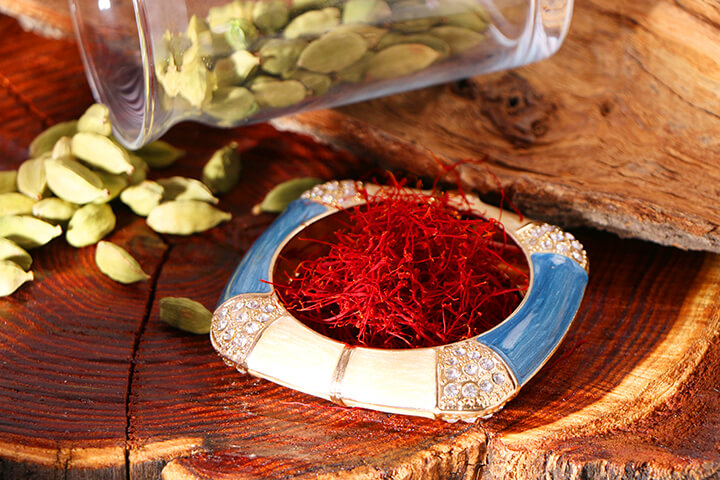
The most popular varieties are produced in Kashmir, Iran, and Spain. To a lesser extent, you can find Italian and Greek saffron available as well. Here is an overview of each type.
Kashmiri Saffron
Kashmiri saffron is arguably the finest tasting variety with the most complex flavor profile. Hand-harvested in the Kashmir region of India, it is characterized by a deep red color and intense flavor. In detail, threads are thick, long, and have a strong, earthy, and slightly sweet aroma. Kashmiri saffron is known for its excellent quality and is often referred to as “Mongra” or “Lacha” saffron.
Iranian (Persian) Saffron

Iran is the largest producer of saffron in the world, and it is prized for its quality. Compared to Kashmiri saffron, Iranian saffron is also harvested by hand, but has a slightly milder flavor and its deep red to red-orange threads are longer and thinner. In general, Iranian saffron is referred to as “Sargol” or “Negin, with Negin being the highest grade.
Spanish Saffron
Spanish saffron is also high quality and is known for its lovely, aromatic flavor that appears less intense than its Kashmiri and Iranian counterparts. It’s thick and long threads have a deep red color. Spanish saffron is commonly labeled as “Coupe” or “La Mancha” saffron, with “La Mancha” referring to the region where it is produced. Many chefs consider the La Mancha variety to be the best in the world.
Greek Saffron
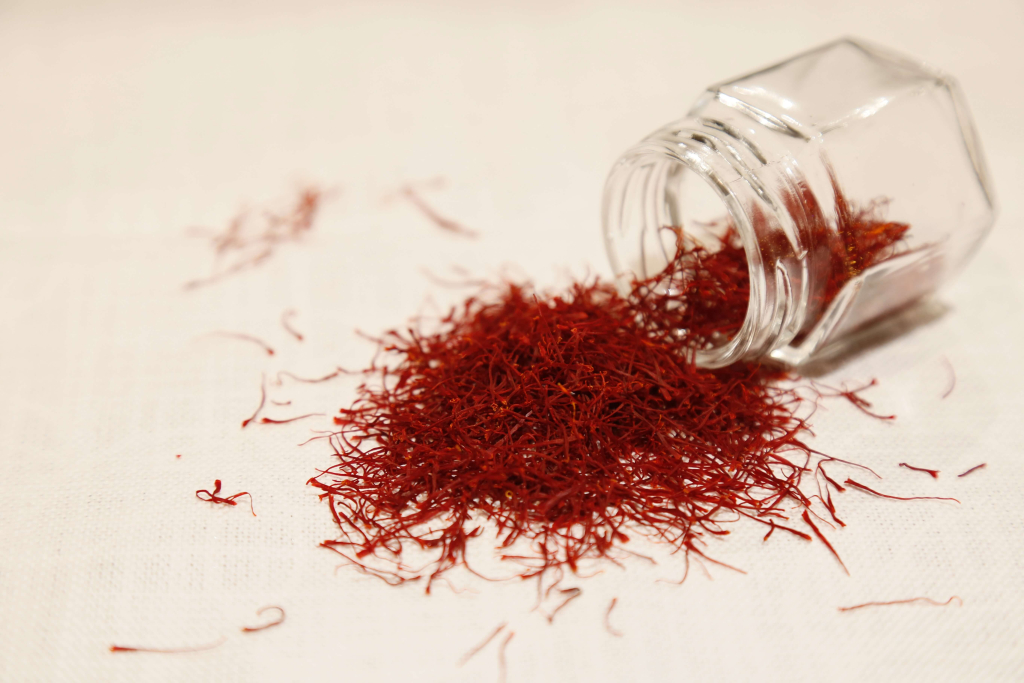
Greek saffron is produced in the Kozani region of northern Greece, and it is known as “Krokos Kozanis.” Valued for its strong color and earthy, slightly more bitter flavor, you’ll find it in traditional Greek dishes like paella or pilaf.
Italian Saffron
The best saffron or “zafferano” from Italy is harvested in the Abruzzo and Sardinia regions. Italian saffron is appreciated for its intense aroma and vibrant red threads.
Tips for Purchasing Authentic, High-Grade Saffron
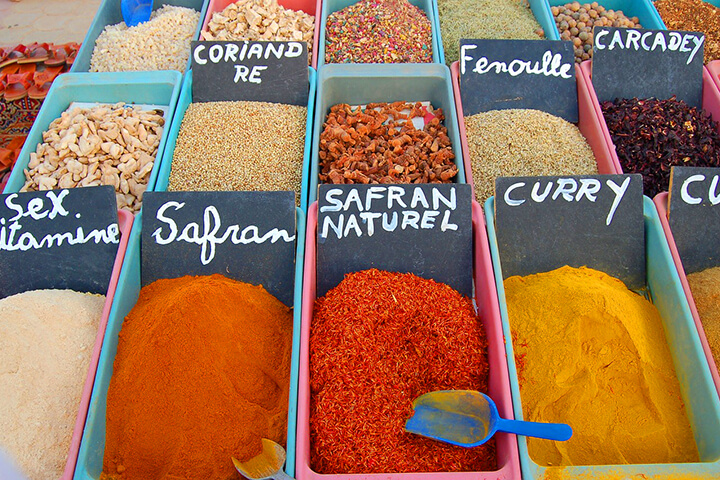
Determining the authenticity and quality of saffron can be a challenge due to its high cost and prevalence of counterfeit or low-quality varieties. Genuine saffron should have vibrant red threads without yellow or white sections. It should possess a strong and sweet aroma when rubbed between your fingers and offer a unique flavor profile that is slightly sweet and earthy. When soaked in warm water or milk, real saffron should release its color, turning the liquid deep golden or reddish.
To ensure you’re getting the real deal, opt for saffron from reputable sources and the aforementioned regions known for quality. Check for certifications like ISO (International Organization for Standardization) or DOP (Denominazione di Origine Protetta / Protected Designation of Origin), and avoid powdered saffron as whole threads are less susceptible to adulteration.
Incorporate Saffron Into Your Commercial Kitchen
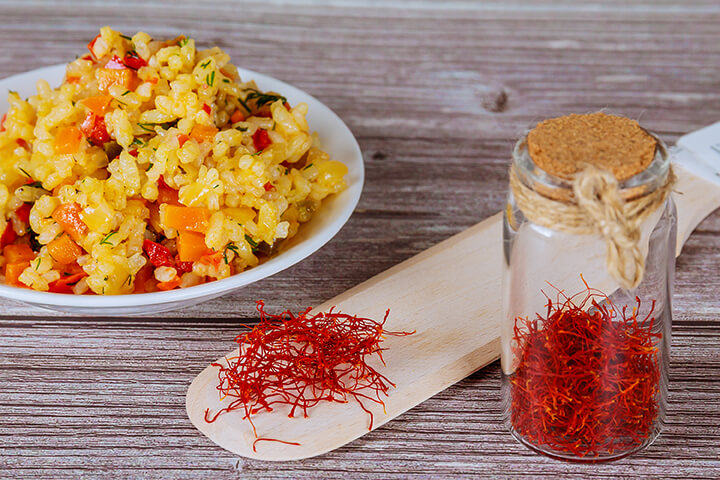
Saffron is a versatile spice. While we champion bold chefs who experiment and create something new, here are basic guidelines on how to incorporate it into different cuisines as well as storage tips.
How to Effectively Store Saffron in Your Back-of-House
In a restaurant’s commercial kitchen, proper saffron storage is crucial. For best results, choose an airtight glass container with a tight-fitting lid to shield threads from air, moisture, and light. Keep it in a cool, dark place like a pantry, away from other spices to prevent flavor absorption. Another key point is although this spice can last up to two years if stored correctly. Nevertheless, as with most ingredients, freshness produces its finest flavor and aroma. Additionally, label the container clearly, store it on high shelves to deter pests, and implement a FIFO system to prioritize the use of older threads in your kitchen.
Indian and Middle Eastern Cuisine
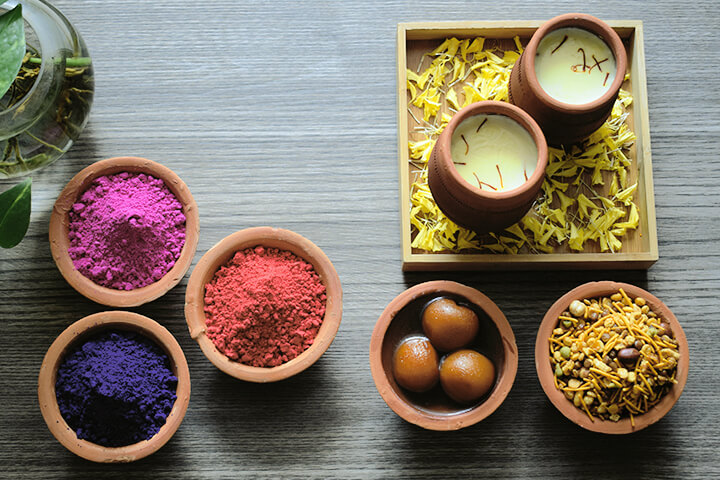
Saffron holds a prominent position in these cuisines. In Indian cuisine, saffron’s golden touch and subtle fragrance adds beauty and flavor to rice dishes like biryani, while its delicate sweetness enhances desserts like gulab jamun and kulfi.
In Middle Eastern cuisine, saffron’s subtle flavor complements savory stews like ghormeh sabzi and tagines, adding depth and complexity. It also adds warmth to Arabic coffee and a luxe touch to desserts such as saffron milk pudding.
Mediterranean and Spanish Cuisine

Saffron’s versatility shines in Mediterranean cuisine, where it infuses seafood dishes with a subtle floral note and complements the richness of rice dishes like risotto.
In Spain, saffron is the heart of paella, imparting its vibrant color and unique flavor to the national dish. It also finds its way into soups, stews, and desserts.
Italian and French Cuisine
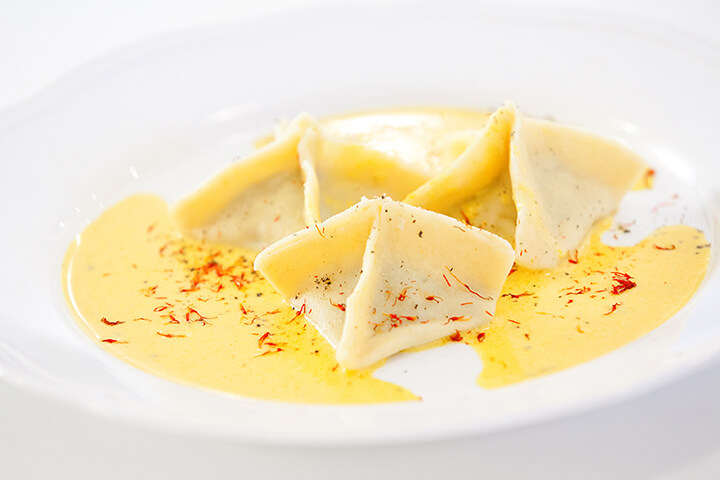
One of the most iconic uses of saffron in Italian cuisine is in the preparation of risotto alla Milanese, a classic dish from Milan. Threads are infused into the creamy rice, creating a golden color and a subtle floral fragrance that complements the richness of butter and cheese.
In French dishes, saffron complements bouillabaisse and slow-cooked meals like coq au vin. You’ll also notice its refined influence in mussel dishes, lobster preparations, and fish soups. Its delicate flavor enhances the natural sweetness of seafood, while its vibrant color adds a visual appeal to the dish.
The Cherry on Top
Saffron adds an aromatic and unexpected twist to desserts, from ice creams to cakes, by infusing it in milk or cream. For beverages, it makes an excellent saffron-infused simple syrup for cocktails. Experiment with pairings like cardamom, rose water, and nuts.
A Spice Worth Its Weight in Gold
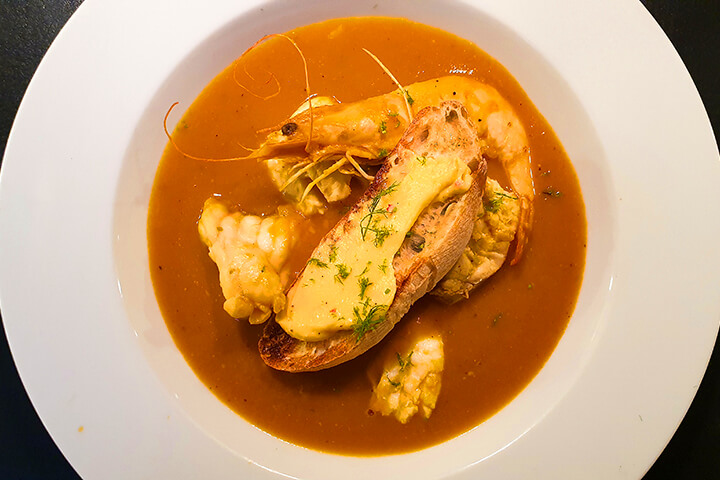
Don’t hesitate to explore saffron’s versatility in your dishes, whether sweet or savory, for an aromatic touch and beautiful color. What is your favorite way to use saffron? Let us know in the comment section!



